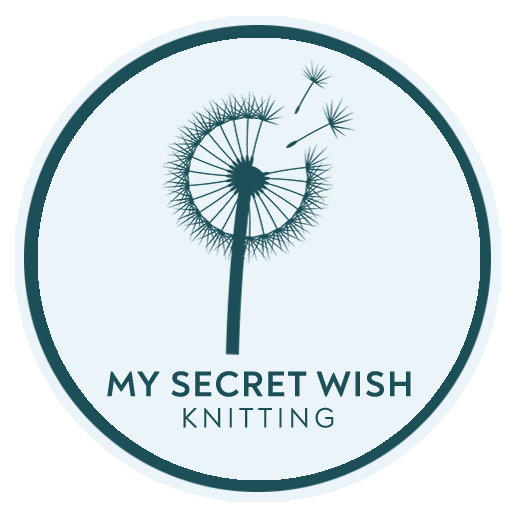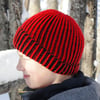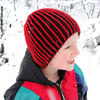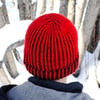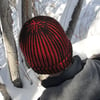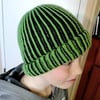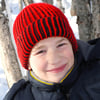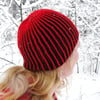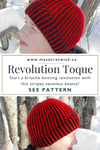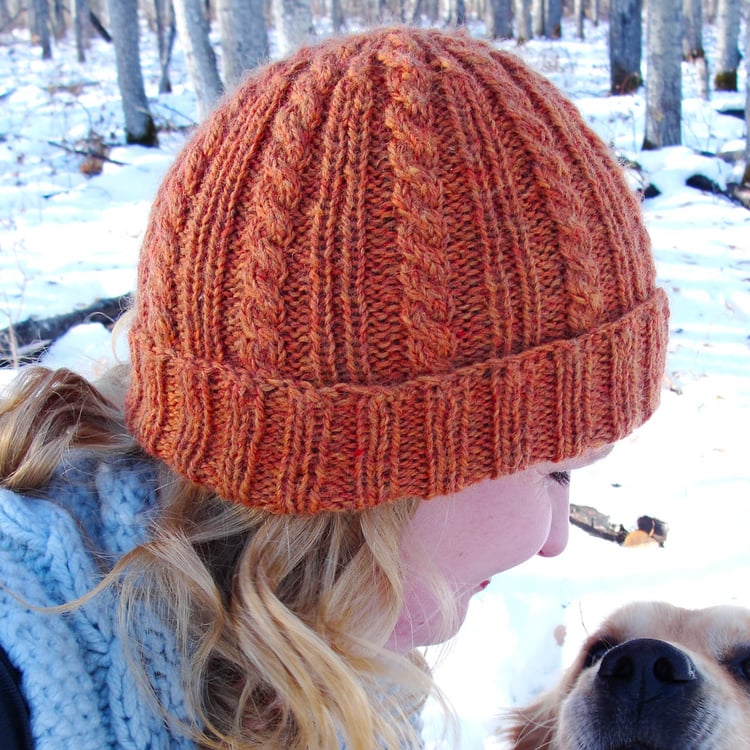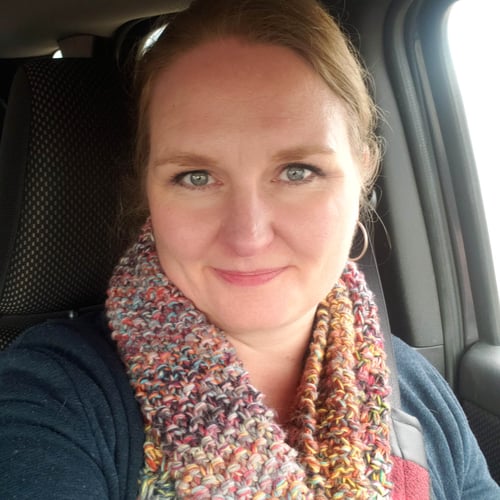Learn Brioche Stitch with this simple knit cap!
Inspired by the Liberty Caps of the French Revolution, this striking toque would look amazing with many colour combinations. It can be worn inside-out or outside-in to make black or red (or your two colour choices) the more predominant colour. This simple ribbed watchman’s cap design is the perfect way to start knitting brioche. You never know—it just might start you on a knitting revolution!
Worked from the brim up in the round. All needed brioche stitches are explained in the pattern.
PROJECT LEVEL: Intermediate
—
Digital download includes:
- PDF (standard) - best for printing or for sighted knitters
See “Accessibility” for more information about file types.
About Collection
Revolution Collection
Start a knitting revolution with these starter two-colour brioche-knitting projects. Learn the basics of knitting this lush, striking stitch with projects that teach you how to knit two-colour brioche in the round.
Patterns include a wide range of sizes and have full tutorial support.
About Design
Construction
Hat is worked in the round from the bottom up.
Variants
- Matching-Colour Brim
- Inverse-Colour Brim
- Brimless
Sizes
Measurements given are head circumference, not garment dimensions. Age ranges are approximate. This garment has slight negative ease.
- EXTRA SMALL (Infant / Toddler): 15 inches to 18 inches (or 38 to 46 cm)
- SMALL (Child): 17 inches to 20 inches (or 43 to 51 cm)
- MEDIUM (Youth): 18 inches to 22 inches (or 46 to 56 cm)
- LARGE (Adult Small): 20 inches to 24 inches (or 51 to 61 cm)
- EXTRA LARGE (Adult Large): 22+ inches (or 56+ cm)
Supplies
Yarn
1 ball each of two contrasting colours of worsted-weight yarn with 100.6 metres in 50 grams (or 110 yards in 1.76 ounces) of a natural fibre yarn. (100% synthetic fibres not recommended for brioche stitch. Wool or alpaca is best.)
Needles
3.5 mm (US 4) eight-inch (twenty-centimetre) double-pointed needles OR two short (approximately 16 to 29 inches or 40 to 72.5 cm) circular needles OR one long (approximately 42 inches or 105 cm) circular needle for use with Magic Loop Method OR SIZE NEEDED TO OBTAIN GAUGE.
Notions
- Yarn needle
- Stitch markers
Gauge
24 stitches and 36 rows = 4 inches (10 cm) over normal stockinette stitch knit flat OR
18 stitches and 32 rows = 4 inches (10 cm) over brioche stockinette stitch in the round.
About Samples
Red and Black Matching Brim (Older Boy):
Knit Picks Swish Worsted, a plied 100% Superwash Merino worsted-weight yarn with 100.6 metres in 50 grams (or 110 yards in 1.76 ounces) that knits up to 18 to 20 stitches in four inches (or ten centimetres) with size 4.0 to 5.5 mm (US 6 to 9) needles over stockinette stitch knit flat.
Knit Picks Swish DK, a plied 100% Superwash Merino DK-weight yarn with 112.5 metres in 50 grams (or 123 yards in 1.76 ounces) that knits up to 22 stitches in four inches (or ten centimetres) with size 3.75 mm (US 5) needles over stockinette stitch knit flat.
- Colourway: Coal
- Size: 4 (Adult Small)
Red and Black Brimless (Younger Boy and Woman):
Knit Picks Swish Worsted
- Colourways: Coal and Serrano
- Size: 3 (Youth)
Green and Black:
Knit Picks Swish Worsted
- Colourways: Black and Peapod
- Size: 3 (Youth)
Techniques & Resources
Skills you will need:
- Knit
- Purl
- Make a gauge swatch in stockinette stitch
All other required stitches are explained.
Techniques used:
The brioche stitches have definitions and photos showing what they look like.
Included resources:
- A comprehensive list of links to online tutorials on my website for necessary skills. Tutorials are screen-reader accessible, with instructions relayed fully in text, and also include videos and downloadable photo tutorials.
- Full glossary
- Schematic
- Instructions for alterations
Publishing Information
Release Date: 2012
Most recent revision: 2024
Publisher: My Secret Wish Publishing
Knitting pattern type: Multiple Design Options
Project type: Hat, Beanie, Toque
Page Count: 9
ISBN (Standard PDF): 978-1-989800-85-0
COPYRIGHT AND LICENSING NOTICE: This pattern is copyright My Secret Wish Publishing. Your purchase of this pattern gives you the right to use it for personal, non-profit use only. To license the pattern to use for profit, please e-mail me for permission. You do NOT have the right to print the pattern for other people (unless they reside in your household) or to transfer the digital file to any other person. This pattern may not be sold, copied, or distributed in any way.
Update History
December 2017:
- Revised formatting of PDF to align with current template style.
- Clarified language where necessary.
June 26, 2024:
- Updated URLs for new store and social links.
- Updated PDF to match current formatting style and allow use of bookmarked headers to navigate.

